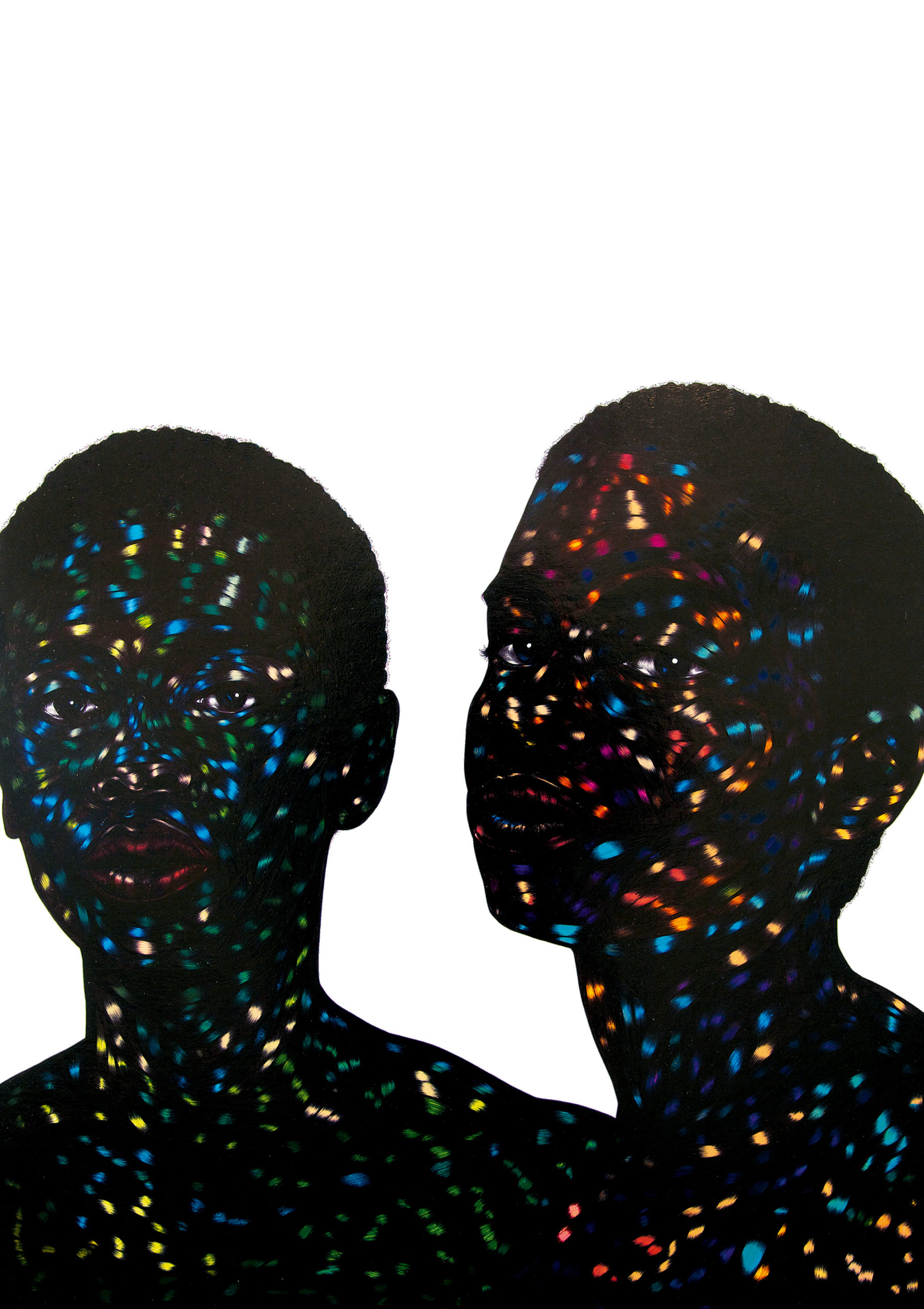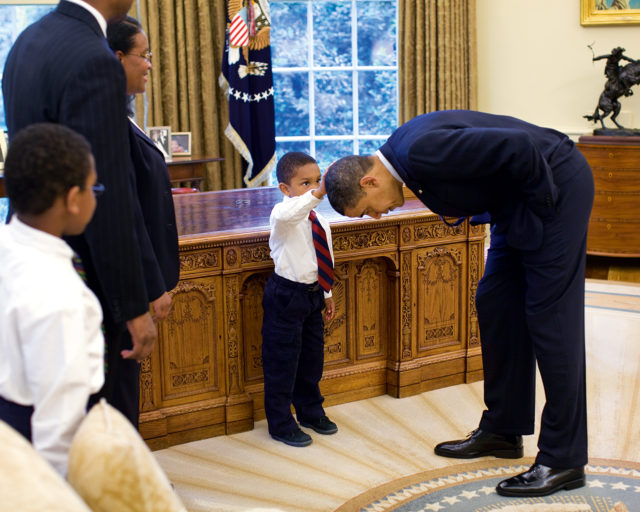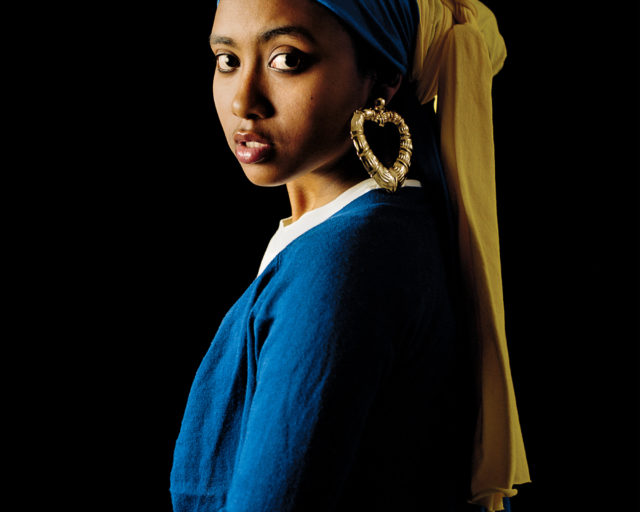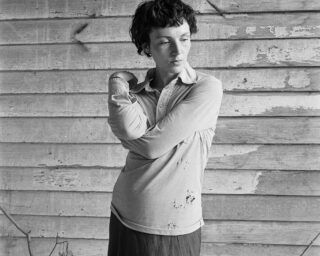Black Lives, Silver Screen: Ava DuVernay and Bradford Young in Conversation
Two groundbreaking filmmakers speak about diversity and inclusion in Hollywood–now a national conversation.
David Oyelowo and Carmen Ejogo in Selma, 2014.
Courtesy Paramount Pictures/Jima
Director Ava DuVernay is on a mission. With her films I Will Follow (2010), Middle of Nowhere (2012), and the critically acclaimed Selma (2014), about Martin Luther King, Jr., she has created cinematic worlds distinguished by deft character studies and nuanced subtexts. One of the only African-American female directors to helm a major Hollywood picture, DuVernay realized early in her career the importance of telling stories as yet untold. In Selma, she portrayed a King of stirring complexity. “We unencased him from marble,” she remarked when the film was released. “We really made him breathe and live as any man would, in his kitchen, telling his wife he’s about to go on a long trip.” In this conversation with her frequent collaborator Bradford Young, two enterprising filmmakers discuss the significance of the black cinematic image. Young, the visionary cinematographer and director of photography, has a distinguished profile in contemporary cinema, enriching the inner lives of on-screen characters with an uncommon range of visual emotions in films like Pariah (2011), Dee Rees’s striking, coming-of-age portrait of a young New York lesbian, and Mother of George (2013), Andrew Dosunmu’s sumptuously colorful drama about Nigerians living in Brooklyn. Here, DuVernay and Young speak at length about their collaborations and inspirations.

Ava DuVernay: I don’t really know what we’re talking about. I just came out of casting and writers room and my head is swimming with other things, so literally, I’m super taking your lead.
Bradford Young: I was going to take your lead! Oh, we’re in trouble.
DuVernay: Let’s get it on track. I think we’re supposed to talk about black imagery, black images … Don’t laugh! Let’s start with Haile Gerima. Shall we?
Young: And the importance of image making and our collaboration specifically. And why should we even care about the possibility of what an image can look like within the context of a black film.
DuVernay: I think my mind can’t help but go to Haile, because today our distribution collective ARRAY announced the acquisition of his film Ashes and Embers (1982) and I’m so proud of that. And he is your teacher, all of our teacher. He’s such a foundation in your work, and an inspiration for our work together. Now, I feel some kind of way about trying to release Ashes and Embers in theaters and other platforms for the first time since its making in the early ’80s. Truly too many have forgotten about that particular work, and the film community at large is not acknowledging him as it should. Because there is no true value placed, outside of the value that we place on our own. No true value placed on the black image as it relates to cinema at large.
Young: I think Haile Gerima is the catalyst and the counterpoint really for our whole conversation. Haile has taught us so much in direct and indirect ways. I discovered knowledge of myself, who I am, what my purpose is on the earth—it comes from me being with Haile for the past twenty years of my life. In particular, Ashes and Embers was the one film that changed not only what I think film can stand for but also what the film experience can be. Ashes and Embers set the bar for me. It was that fine line between realism as it relates to black life and realism as it relates to black life in film, but it was also willing to be experimental and imaginative at the same time. The imagination part of his films isn’t just magical realism. It’s not just imagination or experimentation just for imagination’s or experimentation’s sake. When he wants to convey the psychological decay of the main character, he hangs the camera from a tree and spins it. There’s so much loaded in that. That’s about black men being lynched. It’s about black men ultimately lynching themselves, the black body sort of being lynched in real time by the forces that be. But it’s also in order to put us in the shoes of the person who’s hanging from the tree; he actually hangs the camera from the tree. That way of making films is the beginning of why I even care about the way a film looks, or the potential of what a film can look like.
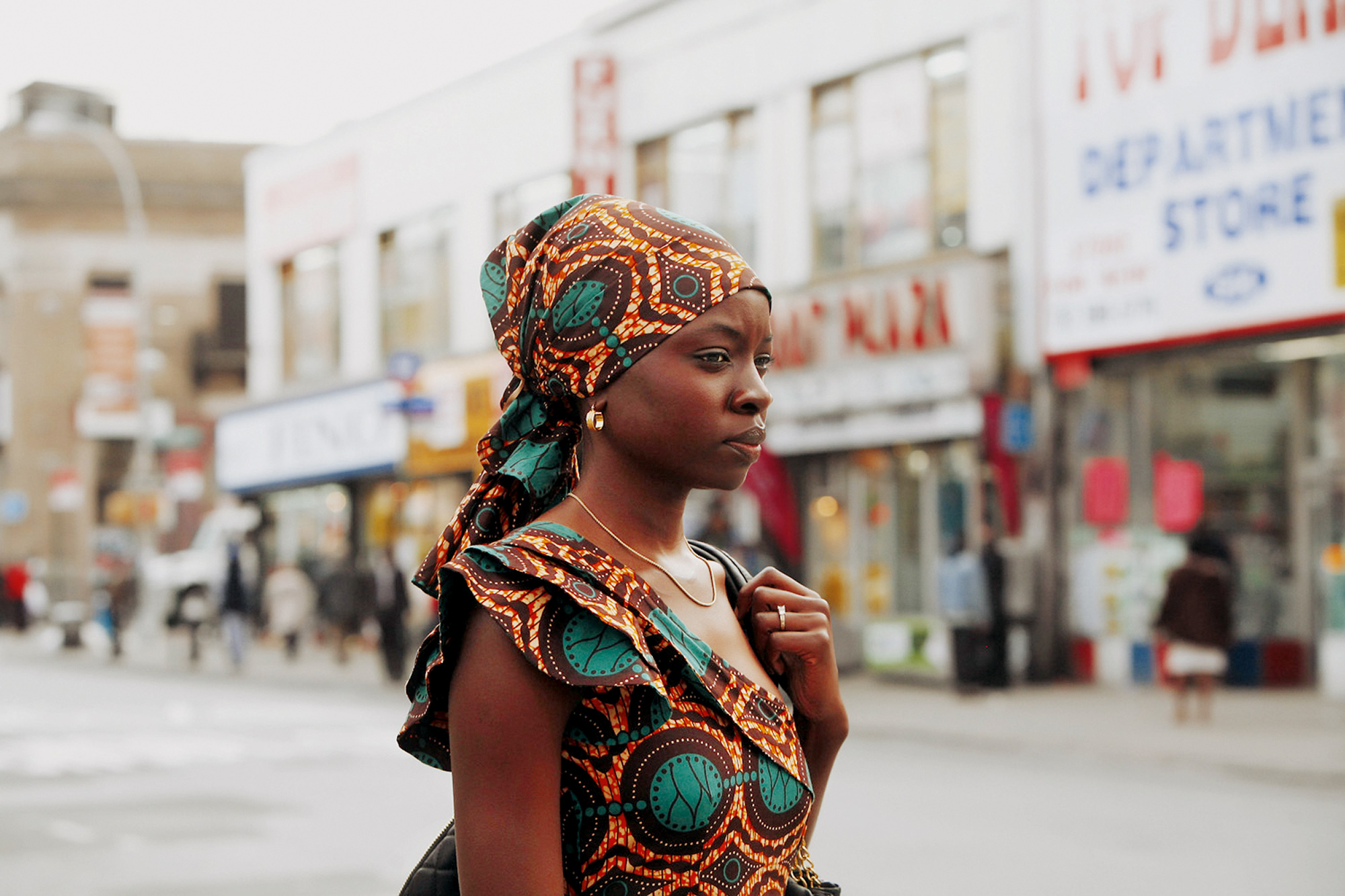
DuVernay: Yes, yes!
Young: But on many levels, I’m so curious to hear from you, Miss Ava DuVernay, a growing artist in the film context. Your life’s calling is about the transformative, revolutionary power of cinema. You’ve taken on a mandate to make film that truly communicates the revolutionary potential of human beings. I’d be curious to hear why you think the image is important in our evolutionary and revolutionary process as black people in the world and within the American context. What makes you feel like image is such a significant element in our development?
DuVernay: Goodness gracious, Bradford. That’s an easy question. Let me just rattle off a quick answer. Ha! The image is intimate to me. We use the term our mind’s eye for a reason. The images that we consume, and that we take in, can nourish us, and they can malnourish us. They become a part of our DNA in some way. They become a part of our mind, our memory.
Young: Right.
DuVernay: It’s in our internal camera. The image. This idea of the image is so much more dense than even using it in a film context. It’s an intimacy inside your own memory, inside your own mind.
We see the world and each other in pictures. That’s why I think film is so emotional. It’s re-creating what’s already embedded in our internal process. It’s an artificial rendering of what’s already going on inside. I think that, for whatever reason, that is why I’ve always been drawn to it, and as you start to apply theories of progression and liberation and all of those things around very intimate ideas, it becomes even more powerful.
But that’s why I’m so excited when I see your images as a cinematographer. Because I know inherent in that image, there is an idea becoming a part of someone’s mental canvas. You drink it in, and that’s now part of you. That’s why what you do is so important, I think, divorced of story. You’re telling your own story within the image that’s sometimes not even attached to the narrative that it’s inside of. Does that make sense?
Young: Yes. As you’re saying that, I’m tapping my foot on the ground. I might actually want to scream and run around the room. As your director of photography, I’m supposed to manage expectations. You say to me, “I want the film to feel this way visually,” and then I have to go pull all these people together to determine how we’re going to make your wishes come true. How we’re going to manifest what you said, this sort of internal image-making capacity that’s innate to all of us. For the last two years I’ve been thinking about images, but as an image maker I’ve actually never heard anybody describe it like that. Now you’ve got me thinking, Wow, I’ve got to really be careful with whom I collaborate, because the director is essentially the person in this context who is going to help me unlock the box.
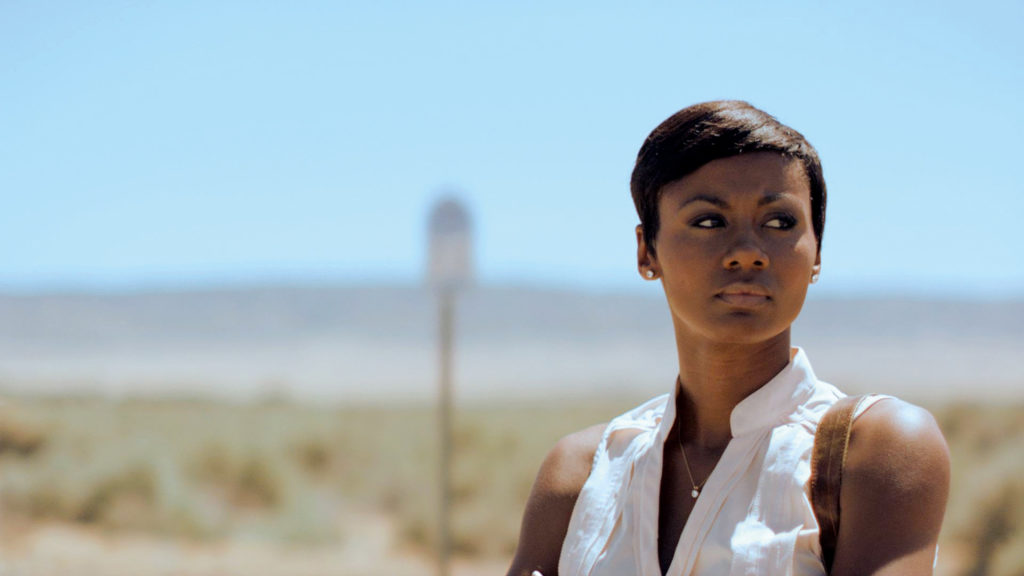
DuVernay: That’s not easy. We work in a place that is set up to, that is crafted to do exactly the opposite of that. Our objectives, our intentions as black movie makers, as a black woman movie director—there’s nothing in this industry, when we work inside of the industry, that fosters that. I think that’s why I hold on for dear life for the collaborations, the moments that exist outside of this industry, because that’s where we both started—outside of the industry.
Young: Right.
DuVernay: You represent a weird conundrum for me in that regard because you represent the moments where I’ve felt the most free, independently making films outside of the industry like Middle of Nowhere (2012). And also the moments when I first took a step inside of that industry with Selma (2014) and tried to create something intentional in an environment that was a lot less free. That’s what I’m wrestling with. The films are not going to reach who you want the way you want if you don’t participate in this industry somehow. I know that to be true. I grew up in Compton, and you can’t see Straight Outta Compton (2015) in Compton because there ain’t no movie theater there. You can’t see Selma in Selma because there ain’t no movie theater there for that black community. You know what I mean? There’s this cinema segregation that happens that ain’t nobody seen Ashes and Embers, the film that they should see! Why?! Because it ain’t coming to a theater near you, because it wasn’t made inside this paradigm. I struggle with that. How have you navigated it? Because you’re doing it quite well.
Young: Sometimes it’s hard for me to see if I’m navigating it well. The installation work and things I’ve done specifically, let’s say, with Leslie Hewitt have become really important in my process. At the same time, I do think there is a disharmony between what I expect from the filmmaking experience and what it is I am actually getting out of all the experience that I’m having outside of the community that actually raised me. You know what I’m saying?

DuVernay: Mmm hmm. Yeah.
Young: It’s not like jazz or hip-hop—art forms that started as expressions of dissonance and resistance. Filmmaking isn’t part of our organic narrative as black people in America. We’re asking people who were very much interested in making sure film communicated white supremacist values, like the founding fathers of the film experience—D. W. Griffith, Thomas Edison, these people who were very interested in white supremacy—we’re asking the sort of grandchildren of those people to allow us into the filmmaking experience with a whole counterpoint to why they started it. You know what I mean? It didn’t start off as an art form of resistance. Actually what you said earlier is the real purpose of why we do this. It’s like trying to etch in real time our mind’s camera, our mind’s image-making capacity. It generates images so that we can deal with life. So the way I navigate it, I think, is that I’ve just got to stay focused on the possibility that one day it could be completely turned over on its head and transformed.
DuVernay: Those words are moving. As you were talking, a conversation that I had with Ryan Coogler came to mind. We were looking at the statistics that just came out from the Directors Guild of America about super-disturbing numbers that really starkly lay out the omission and the absence and the disappearing of voices other than white men in the guild, or the industry or whatever. It went by year and by studio, by gender and by race. It was like, one woman director at Paramount in 2015, two people of color directors at Warner Bros. in 2013–14, etcetera. We were trippin’ out, because he rightly remarked, “That one at that studio in that year is you, and I’m one of the two in this year.” So we were talking about those numbers; they might as well have had our names on it. We are the numbers on the chart at this moment. Ain’t nobody else around. Like, who are we looking for? Ain’t nobody coming to help us. Know what I mean? There’s one person in that column and it’s you and you’re standing there next to one other person at another studio in the other year and that’s your homie. So how do you reconcile being part of a larger industry, a larger energy that’s making a certain thing when you lay the numbers out and we literally are standing alone amongst a lot of opposition, misunderstanding, purposeful omission, all of that.
Even more so, I thought, Oh, well, Ryan, at least he’s got five other black men with him as small as that is. There’s two of us. Women. Two black American women who’ve made studio movies in 2014. There’s me and Gina Prince-Bythewood. I thought, Well, we’ve got it really bad! And then, do you know who I started to think of?

Young: Who?
DuVernay: You! Because you ain’t got none. The past five years, it would be one. It would be Brad. Not even one other black cinematographer who’s getting air and room to breathe in the studio framework. Just one. You. What is that like? When you can say, you are a creative entity that has it worse than the black woman filmmaker! That’s rough, cause we got it bad! Ha! It’s the black cinematographer. That’s so sparse that there’s only one guy doing it on a certain level. You truly stand alone in this moment. I know it’s not a badge of honor. That’s a badge of disappointment for all of us that there’s not more. But surely, that’s where you are. And what’s going on with that?
Young: You know what’s bittersweet about it? The sweet part of it is all of the elders around me, Ernest Dickerson, Malik Sayeed, Arthur Jafa, and Johnny Simmons. It’s not like I’m really alone. But things do happen when you’re alone. There’s a certain dissonance that comes from being alone. Know what I mean?
DuVernay: Yes.

Young: I’m just one cell in a mass of what we need to do to feel human in our experience of being black in the world. Obviously, there’s Shawn Peters. There’s Chayse Irvin. There are cats that are coming up. But at the same time, I do feel lonely, because I still want to be able to pick up the phone and call the other cinematographer who’s working consistently within projects, the same kind of level of projects I’m working on, and say, “Hey, what was it like for you?” I still have to go back to Haile.
Listen, I’m like the seventh black person to ever be let into the American Society of Cinematographers (ASC). The seventh. Out of a body of more than three hundred people. According to the history of the organization, they don’t let us in all the time, and when they let us in, we’ve got to really check how we celebrate that.
These images, these things I’m helping to provide, come from a very complicated, joyful, but very painful experience of often being the only person in the conversation.
DuVernay: You were talking about ASC. Same situation with the Academy. Having a moment that you look around and it’s not even a deep dive to understand the context. It’s so stark, it’s laid so bare right there. How much can you celebrate? It’s a residue of all that is not. All that is not. All that never was. All that is absent. It sits right on top of whatever little moment that is. But that’s such an interesting way to think about your place in all of this, and it’s really fascinating to hear how you’re reconciling it, both in your work and just personally.
Young: Everything we just talked about is why you and I are together. It is why we’re doing what we’re doing together. We’re aware of what’s happening around us.
DuVernay: Yeah, for sure. Yes, indeed. Okay, they want us to talk about that work. Our work together. I’ll throw out the name. You can tell them what we did. The first was My Mic Sounds Nice (2010). It was a documentary that was the first documentary that BET ever commissioned as an original doc. It was about women in hip-hop and the art form of emceeing, and women. I’d reached out to you because I had seen Mississippi Damned (2009). Tina Mabry, great filmmaker, who is now working with me, blessedly, on my new TV show project—writing and directing with me. I’d seen her film and loved it, which you shot. I reached out to you about I Will Follow (2010) and you couldn’t do it because you were shooting the great filmmaker Dee Rees’s project Pariah (2011). I didn’t know you from Adam. It was just a cold call.
Young: That’s right. First of all, everybody had been talking about you. So when you asked me and I said I couldn’t, I was hoping and anticipating at some point that you would call again and we would do something together. When it finally came that time when we were actually going to do My Mic Sounds Nice, it was abundantly clear from the beginning that whatever we were going to do, we were going to try to push it. We were going to try to make it not just seeing these beautiful sisters on a screen talking about their experience. It was also going to be about how people were going to experience it visually.
So we met in Atlanta. Before we even went to shoot, we sat on these couches in the hotel where we were staying, and we had a more than an hour long conversation about what our expectations were and are about cinema. I hadn’t had that experience before. We talked about Haile. You were bringing up films that I had never seen. I just realized, like, Oh, this is my sister. This is my friend. This is a person I haven’t met, but we’ve been on the same path, the same journey. The only thing that was separating us was land, was space.
DuVernay: You’re taking me back to that couch, that bad faux postmodern couch where this collaboration was born. Ha! It was a real organic, beautiful, deeply rooted conversation in this totally false, like fabricated environment.
We went out into Atlanta and we shot. I remember it was the second day or the first day and I still have these people in my head. We saw some young brothers in the street skating. There was a girl with them. Do you remember this? I said, “Look at them; they’re so beautiful.” I always regret that we never went back and shot them. She was so beautiful. They were just some skater kids. You said something like, “Look at them, they’re free,” and then we started talking about a story, like, “Wow, we should have talked with them.” Anyway, I think of them now and then. Memory. The mind’s eye. I can see that moment that I looked over at them in my head still. Do you remember?
Young: I do. They were three skater kids, three black skater kids, in an abandoned parking lot. Two brothers and a girl in East Point, Georgia. We’d just come out of that raw food restaurant, feeling good. Feeling good!

DuVernay: Yeah! Yes! Middle of Nowhere was our next collaboration. You were already a star. You’d already won Best Cinematography at Sundance for Pariah, or it was coming up. These things that the industry marks as worthy. But we already knew. I remember being glad that you were doing it, because I think at that point you had different choices about what you could do. Different possible trajectories and different people pulling on you different ways. The talent was apparent at that point. Enough of us had seen the work, and were valuing it. So anyway, it was no money. It was fourteen days in LA, in South Central and all around LA. Yeah, what did we do then?
Young: We were at a place to exercise some of the ideas that we think about. Like, how do you capture black life in real time? We’d already talked Ashes and Embers. We already had those references. Now it was time to show up and be part of that conversation.

DuVernay: After, we did a branded piece, The Door (2013), commissioned by Prada. They basically just gave a chunk of change to tell a story, as long as the characters were wearing their clothes. I was like, “let’s see … ok.” And we made something … I love that piece. I think we said something with it.
Told a story that I thought was important. Everyone looks like you just want to sop them up on a biscuit. We walked into that with very little prep. Very little prep. I remember being in that house like, “ok, let’s have her stand over there; let’s have her stand by the painting; let’s get her by the painting, I might use it.” By that point, we’d already done Middle and Mic and we had a shorthand. I just remember feeling super free. Even though the client was on the set looking at it, it felt super free and very connected. What did you think?
Young: Yes. It was basically an experiment to see if we could do something more free and do something commercial, sell a product. I hadn’t shot many commercials and you hadn’t shot many either. It was beautiful to improv with you. I’m so proud of that piece. I think this is what we do when we come together. We try to bring all the conversations we have when we’re not shooting movies together or shooting commercials together.

DuVernay: There’s no one who can reach into my brain and make the image a reality, that mind’s eye into a real thing, better than you. You make it even better than I even thought of it.
Then Selma was next. Truly, on Selma was the first time I felt like I knew what I was doing at all. I had made five documentaries, two narrative films, shot an episode of Scandal, done the Prada thing, done a couple of other branded pieces —and with all those I felt not entirely comfortable within myself, if I’m honest.
So it was on Selma that I was super clear. From my work with the actors, to my work on the script, to my work with you on camera, to work with the set design, the locations, production design.
Whatever my strengths were, and weaknesses, I feel like they all evened out and I had accepted my limits and my strengths and wasn’t beating myself up over either. It’s certainly not done but I felt like I was at least stepping into a sphere where I could say, Oh, I understand. I haven’t mastered any of it but I understand what I want my place to be.
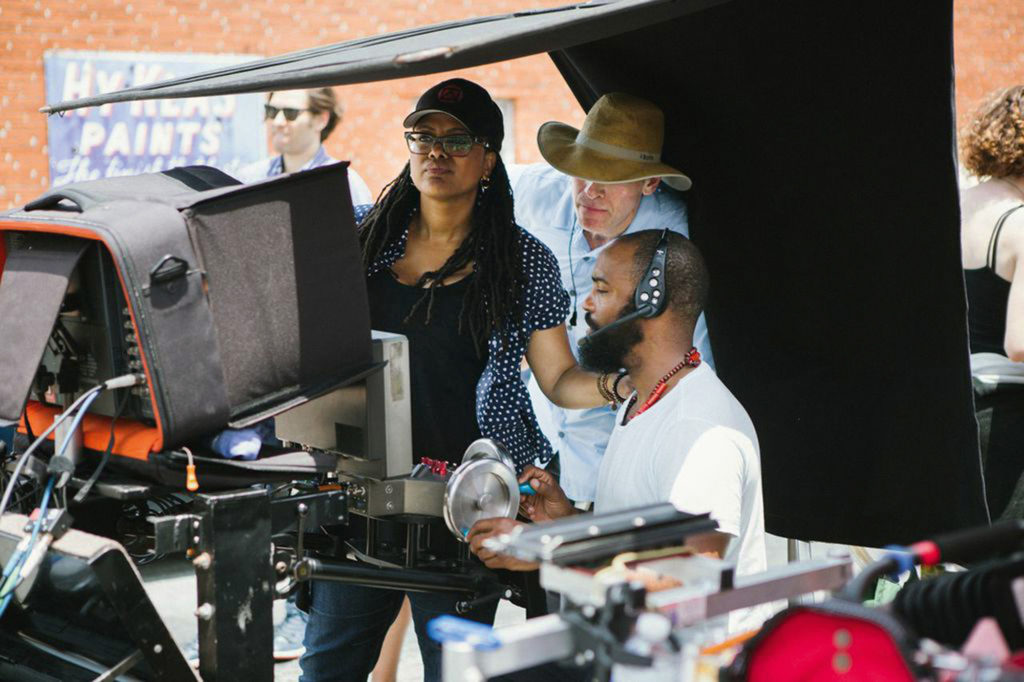
Young: You had so much swagger on Selma. It was unbelievable. Working with you on that film has changed not just the way I look at you as a director, but the way I look at you as a woman, as a person, as a human being. It was evident and clear from the time that you showed me those Paul Fusco photographs to the point we went into the battle. You were like, “This is what I want, and it’s got to happen.” I was just watching everybody, including myself, line up and meet the challenge.
DuVernay: We couldn’t have done it without each other. Nor would I have wanted to.
Young: I feel the same.
DuVernay: So as we wrap up this almost conversation for some people who are listening, and they’re like, What the hell are they talking about?
Young: Ha!
DuVernay: I just have to thank you for being my partner. I just want to thank you. Because before the image itself, it’s the experience of making the image. The audience gets the image. We get the experience of making the image, too. And those experiences when I’ve worked with you have been real gifts. So thank you, my brother. I love you.
Young: I love you, A. I always say, I’ve been standing with Haile for twenty years, and I’ve watched a lot of cats, brothers, and sisters come in and out of his space. But you are the first person that I brought to meet the brother. We all love you. We adore you. We look up to you right now. You’re so real. And people got to know that. I hope people who read this know that. Man, the way you’re navigating this space—we’re watching you. We’re learning. Because you bring a lot of dignity—forgive me, I’m getting emotional—you bring a lot of dignity to a space where I don’t see dignity. I know we all have our capacity to go down that road. But you? You are relentless. And you make us so proud. That’s why I don’t want to waste your time. Even my wife is like, “Do not waste Ava’s time. She’s on a mission.”
DuVernay: I’m happy to be on it with you, Brad.
Read more from “Vision & Justice” or subscribe to Aperture and never miss an issue.












